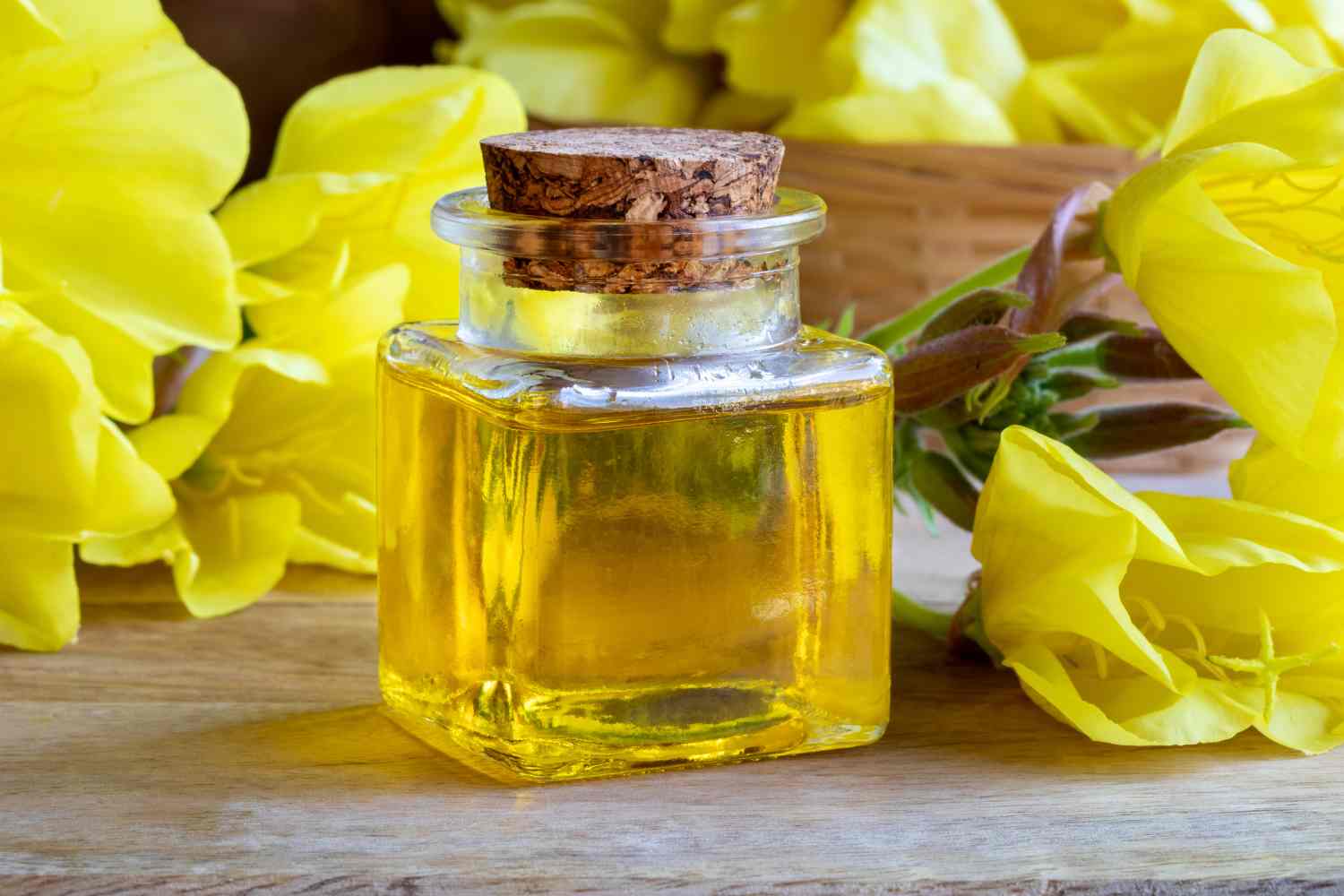Evening primrose oil is often promoted for menopause symptoms like hot flashes and bone loss. Research shows mixed results, but it may support skin health, circulation, and PMS relief.

Table of contents
Menopause marks the natural decline in reproductive hormones and the end of a woman’s menstrual cycles. It usually begins in the 40s or 50s, and while it’s an inevitable transition, it can also be an uncomfortable and sometimes painful one. Hot flashes, night sweats, and mood swings are just some of the symptoms that can make daily life difficult.
Researchers have been looking for gentle ways to ease this passage, and one supplement that often comes up is evening primrose oil, derived from the seeds of a delicate yellow-flowered plant native to North America. Some studies suggest it may bring relief, though the science is far from unanimous.
The symptoms that change daily life
Menopause comes with a wide range of effects. The most common include hot flashes, vaginal dryness, chills, night sweats, weight gain, irregular periods, mood swings, reduced libido, poor sleep, bone loss, headaches, anxiety, and depression.
Because menopause is a natural process, treatments usually focus on managing symptoms rather than “curing” them. Prescription medications are available, but potential side effects drive many women to explore alternative or complementary therapies. Doctors generally recommend speaking with a healthcare provider before adding any supplement—even a natural one—to your routine.
Herbs and supplements in the spotlight
Evening primrose oil (also called Oenothera biennis oil) has a long tradition of use. Rich in gamma-linolenic acid (GLA), it is often marketed for reducing hot flashes and bone loss. However, results have been mixed.
One clinical study found the oil was no more effective than a placebo in preventing hot flashes, while another suggested it was about 10% more effective at reducing their intensity.
Another review compared calcium supplements to a blend of evening primrose oil, calcium, and omega-3s. Both groups maintained bone mineral density, but the oil offered no additional benefit beyond calcium alone.
What evening primrose oil can do

Evening primrose oil has a reputation beyond menopause. When applied to the skin, it may improve hydration and elasticity, making it a natural ally against dryness, eczema, psoriasis, hives, acne, and even wrinkles. Thanks to its antioxidant properties, it’s widely used in skincare.
Taken internally, it appears to support blood circulation, may lower LDL cholesterol and triglycerides, and reduce inflammation linked to conditions such as arthritis. For women, it’s also used to ease premenstrual syndrome (PMS) and support fertility, by improving cervical mucus quality.
You’ll find it sold as pure oil for topical use or in capsule form. A common dose is 500–1,000 mg per day (2–4 capsules of 500 mg, or 1–2 teaspoons/5–10 ml), though experts always stress that dosage should be discussed with a doctor.
How to take it—and when not to
The supplement is generally well tolerated, especially in the short term. Possible side effects include nausea, headaches, diarrhea, or mild skin reactions. It’s not recommended for people with epilepsy or schizophrenia, and it may interfere with certain HIV medications. That’s why it’s crucial to consult a doctor before starting it, particularly if you’re already taking other drugs or supplements.
What about soy?
Evening primrose oil isn’t the only plant-based ally in the conversation. Soy products, rich in isoflavones that mimic estrogen’s action in the body, may also help. Some studies suggest women who consume more soy experience fewer hot flashes, though large-scale clinical trials haven’t consistently confirmed the effect.
A recent review of 95 studies found soy isoflavones may benefit bone health and slightly reduce hot flashes, but results vary widely. For most women, soy foods are safe—unless there’s an allergy or thyroid condition. Possible side effects include stomach upset or diarrhea.
